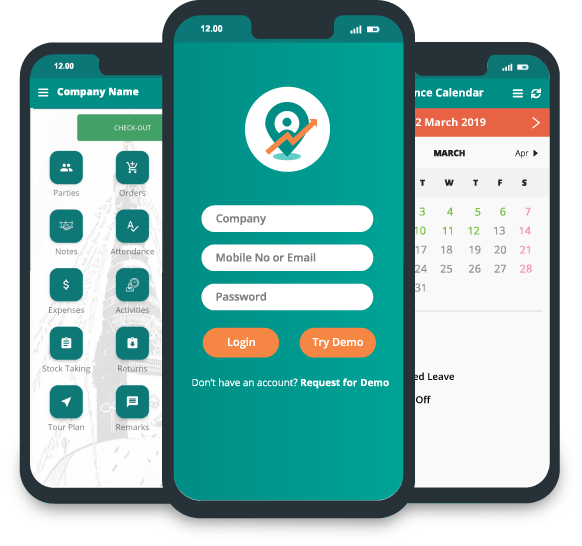Sales Performance Management: The Key To Unlocking Your Sales Team's Potential

Table Of Content
- Understanding the Importance of Sales Performance Management in Business Growth
- Key Components of Effective Sales Performance Management
- Challenges and how to overcome them in SPM
- Future Trends in SPM and Technologies Driving Change
- Conclusion: Importance of SPM and Call to Action for Implementing SPM Strategies
The success of any business, no matter its size or industry, is ultimately measured by its sales figures. In the competitive modern landscape, where market dynamics change at lightning speed, managing and optimizing sales performance is a key driver of growth, profit, and sustainability. Yet, how to effectively manage and measure sales performance is often a puzzle for many organizations.
In this comprehensive guide, we’ll unravel the intricacies of sales performance management (SPM), shedding light on why it's more than just a buzzword. We’ll explore the practical steps you can take to foster a culture of sales excellence within your organization, emphasizing how SPM aligns people, processes, and technology to supercharge your sales engine.
Understanding the Importance of Sales Performance Management in Business Growth
At its core, sales performance management (SPM) is the practice of monitoring and directing sales processes to achieve desired outcomes. It's about harnessing the potential of your sales team by setting clear objectives, providing regular feedback, and implementing effective reward systems.
For a sales team, SPM isn’t just about increasing the bottom line. It's also a mechanism for driving continuous improvement, fostering employee development, and ultimately ensuring customer satisfaction that leads to loyalty and repeat business.
This section will highlight why SPM shouldn’t be seen as another administrative burden but as a strategic imperative for sustained business growth.
Why does sales performance management matter?
The traditional approach to sales management, largely grounded in gut-feel and intermittent snapshot analyses, is increasingly being eclipsed by the demand for data-driven insights and predictability. SPM injects a level of rigor and accountability into the sales function, aligning it closely with organizational goals and customer needs.
From setting achievable targets and recognizing high-performing individuals to tweaking ineffective strategies, SPM presents a systematic, evidence-based approach to sales that fosters:
Consistency in sales output
Timely and actionable performance feedback
A culture of meritocracy and achievement
Holistic business insights through sales data analytics
This structured framework allows organizations to not only boost their short-term sales but also stabilize and forecast their revenue streams more accurately.
Key Components of Effective Sales Performance Management
A robust SPM strategy is comprised of several key components that must be intricately woven together for maximum effectiveness. Each component plays a vital role in the overall objective of boosting sales performance and aligning the sales function with a broader business strategy.
Sales Planning
Effective SPM starts with clear and strategic sales planning. This involves setting realistic sales quotas and targets that are SMART (specific, measurable, achievable, relevant, and time-bound) and reflect market potential and organizational goals. The planning phase considers not only the desired sales numbers but also the means to achieve them, including resource allocation, territory planning, and process optimization.
Territory and Quota Management
Balanced territories and well-managed sales quotas are critical components of a successful SPM strategy. By ensuring that each sales rep has a fair and achievable quota and that territories are effectively divided to capitalize on market opportunities, organizations can avoid demotivation and foster a performance-driven culture.
Incentive Compensation
The way you compensate your sales team can significantly impact motivation and performance. An effective incentive compensation plan aligns the interests of the sales force with the company’s objectives, encourages desired behaviors, and rewards top performance.
Coaching and development
Sales representatives thrive when given the right support and resources to develop their skills. Regular coaching and training not only improve individual performance but also contribute to a collective boost in sales outcomes.
Performance Analytics
Data is at the heart of SPM. Analyzing sales performance data can offer invaluable insights into the effectiveness of sales strategies, the productivity of the team, and the health of the sales pipeline. Modern analytics tools can enhance the decision-making process, enabling real-time adjustments to sales plans and tactics.
Challenges and how to overcome them in SPM
Despite the potential benefits of SPM, organizations often encounter obstacles along the way. Common challenges include resistance to change, data silos, and the complexity of managing a global sales team. This section will outline strategies to overcome these barriers and ensure the successful adoption of your SPM strategy.
Addressing change management
Change is hard, especially when it involves overhauling established sales processes. To overcome resistance to change, involve your team early in the process, communicate the benefits clearly, and provide the necessary support and training.
Breaking Down Data Silos
Effective SPM relies on a comprehensive view of sales data. Data silos, where data is stored in disparate systems, can hinder this visibility. To break down data silos, invest in integrated systems, ensure data quality, and establish clear data governance policies.
Managing a Global Sales Force
SPM for global sales forces comes with its own set of challenges, including cultural differences, varying regulations, and communication barriers. To effectively manage a global sales team, tailor your SPM strategy to local markets, employ sales managers who understand local nuances, and utilize technology for seamless communication and collaboration.
By addressing these challenges head-on, you can pave the way for a smooth SPM implementation and enjoy the benefits it brings to your sales organization.
Future Trends in SPM and Technologies Driving Change
The field of SPM is dynamic, with new technologies continually shaping its evolution. Future trends such as AI and machine learning, advanced sales analytics, and mobile sales enablement are set to redefine the SPM landscape.
The role of AI and machine learning
AI and machine learning are becoming integral to SPM, offering predictive capabilities that can forecast sales performance, identify trends, and suggest actions to improve results. These technologies can also automate routine tasks, freeing up sales teams to focus on value-added activities.
Advanced sales analytics
The future of SPM lies in the advanced analytics that provide deeper, more actionable insights into sales performance. With the ability to look beyond revenue figures, organizations can gain a better understanding of what drives sales success and use this knowledge to refine their strategies.
Mobile Sales Enablement
The modern sales force is increasingly mobile, and SPM must adapt to support this. Mobile sales enablement technologies allow sales reps to access critical information, perform key tasks, and collaborate with team members from anywhere, at any time.
By staying abreast of these trends and incorporating relevant technologies into your SPM strategy, you can maintain a competitive edge and future-proof your sales function.
Conclusion: Importance of SPM and Call to Action for Implementing SPM Strategies
The discourse on sales performance management isn’t merely a theoretical exercise. It’s an actionable blueprint for optimizing the beating heart of your commercial operations. With a well-deployed SPM strategy, your organization stands to reap a bounty of rewards, from increased sales effectiveness and efficiency to a more engaged and motivated sales force.
For those yet to traverse the path of SPM implementation, the call to action couldn’t be clearer. The time to unlock the full potential of your sales team is now. Start small, refine often, and never lose sight of the inextricable link between a well-oiled SPM engine and your business’s trajectory.
Message on Whatsapp
You can get in touch with us using Whatsapp. Send us a message and we'll get back to you a soon as possible



